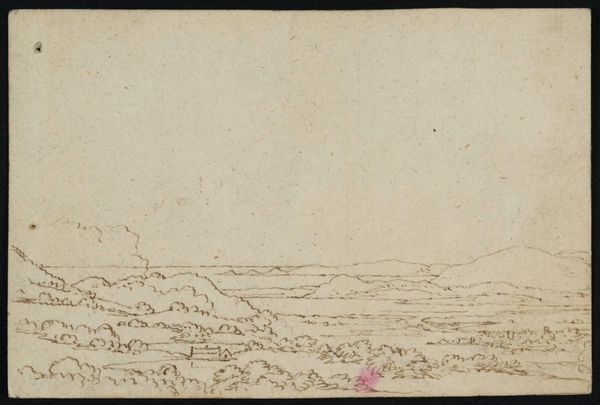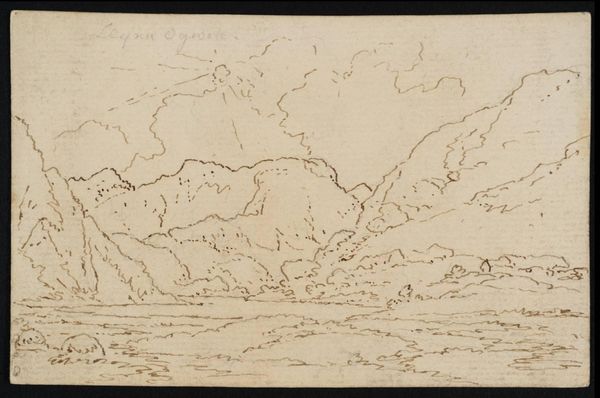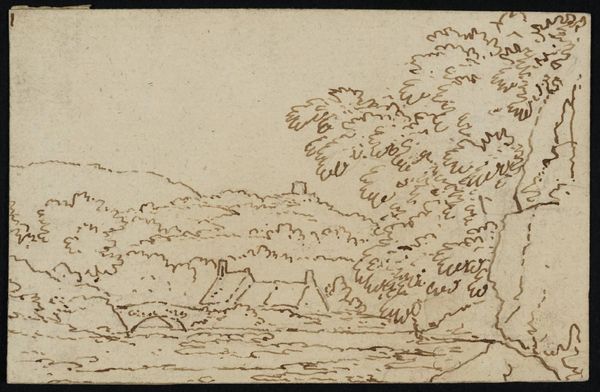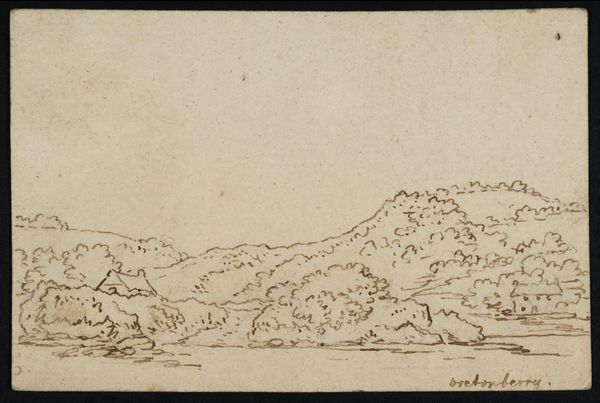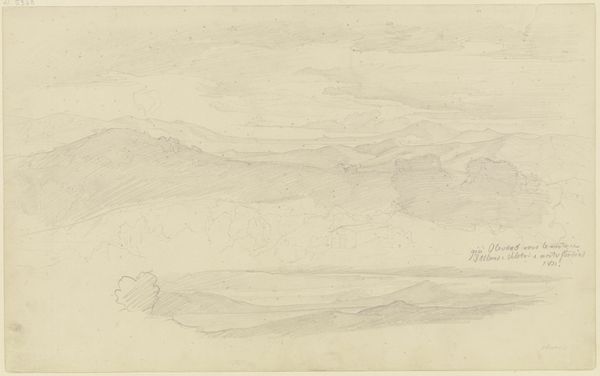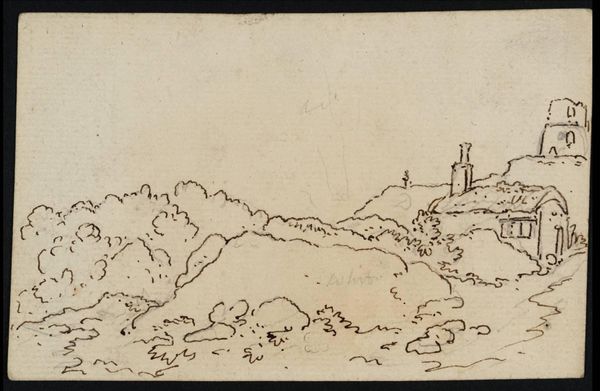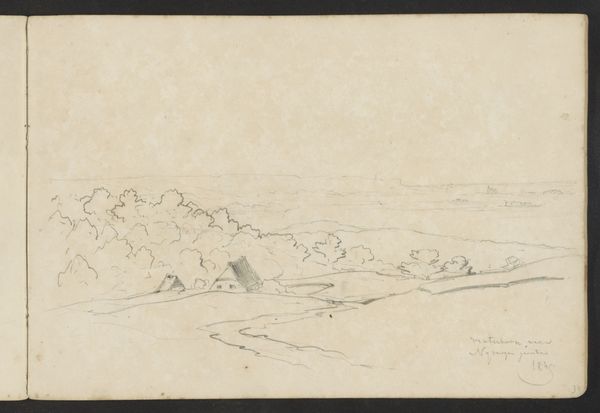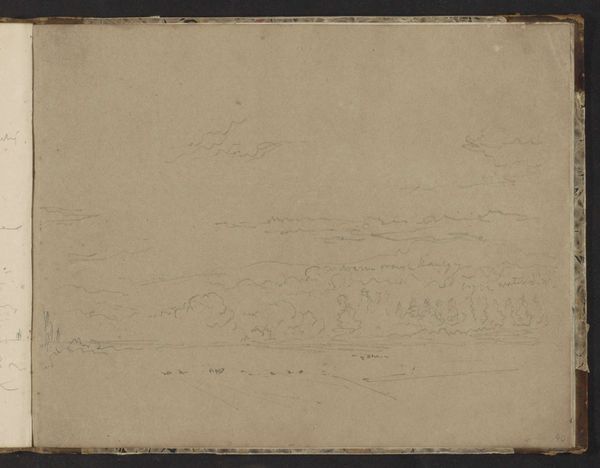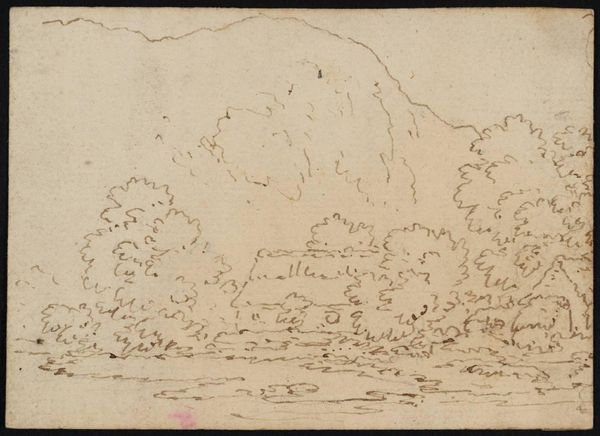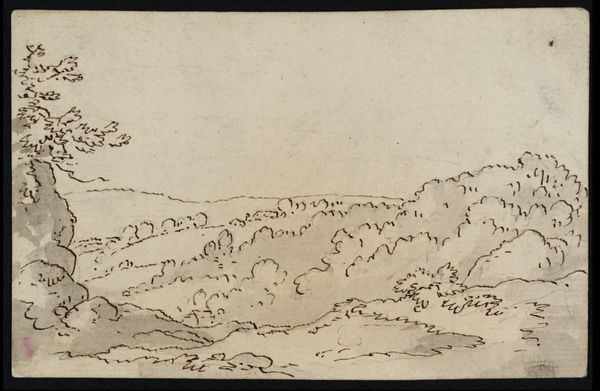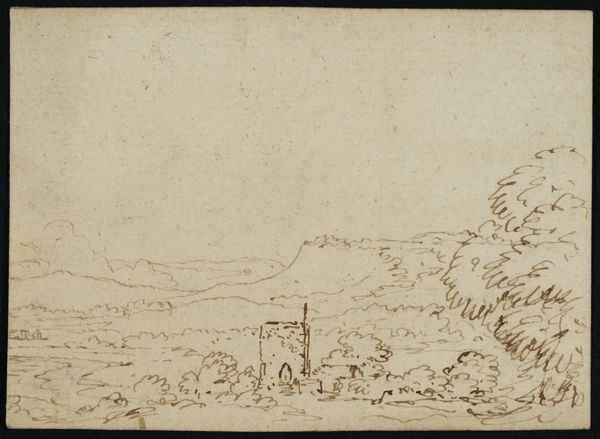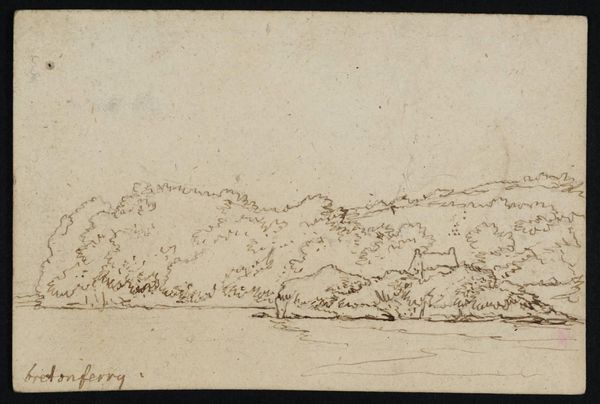
Dimensions: support: 78 x 119 mm
Copyright: CC-BY-NC-ND 4.0 DEED, Photo: Tate
Curator: This is Philip James De Loutherbourg's "A Wooded Cape at Briton Ferry," housed right here at the Tate. Editor: It's striking how such minimal lines can evoke such a palpable sense of tranquility. The simplicity is quite powerful. Curator: The rhythmic interplay of line and space certainly establishes a visual harmony. De Loutherbourg's handling of the pen generates a sophisticated study in texture. Editor: Beyond the technical skill, what strikes me is the implied narrative of land ownership and the often-overlooked presence of marginalized communities displaced by such idyllic scenes. How did these landscapes contribute to specific social hierarchies? Curator: While your point is valid, I'm drawn to the formal composition itself – the masterful control of line and the evocation of spatial depth within such a compact format. Editor: True, but it is crucial to remember that these aesthetic choices aren’t made in a vacuum. De Loutherbourg painted in a historical context. Curator: Indeed. Considering the piece on its own terms, though, the artist's skillful orchestration of line offers a quietly compelling visual experience. Editor: An experience, yes, but one always situated within a broader, often contested, history. Art always reflects something more.
